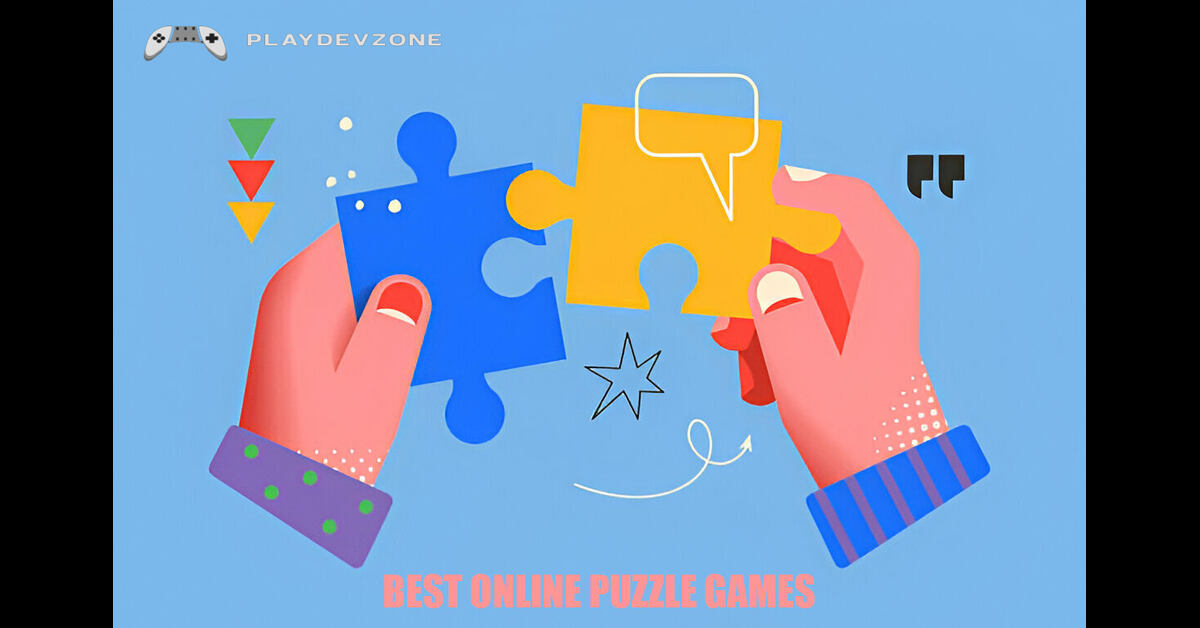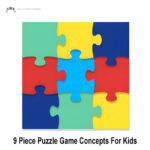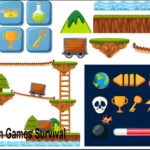Puzzle games have stood the test of time as one of the most engaging and rewarding genres in online gaming.
From classic tile-matching challenges to modern brain-teasers, puzzle games captivate players of all ages with their simplicity, creativity, and mental stimulation (Best Online Puzzle Games).
But have you ever wondered what goes into making one?
In this blog post, we'll explore the best online puzzle games that continue to dominate the charts and inspire gamers around the world.
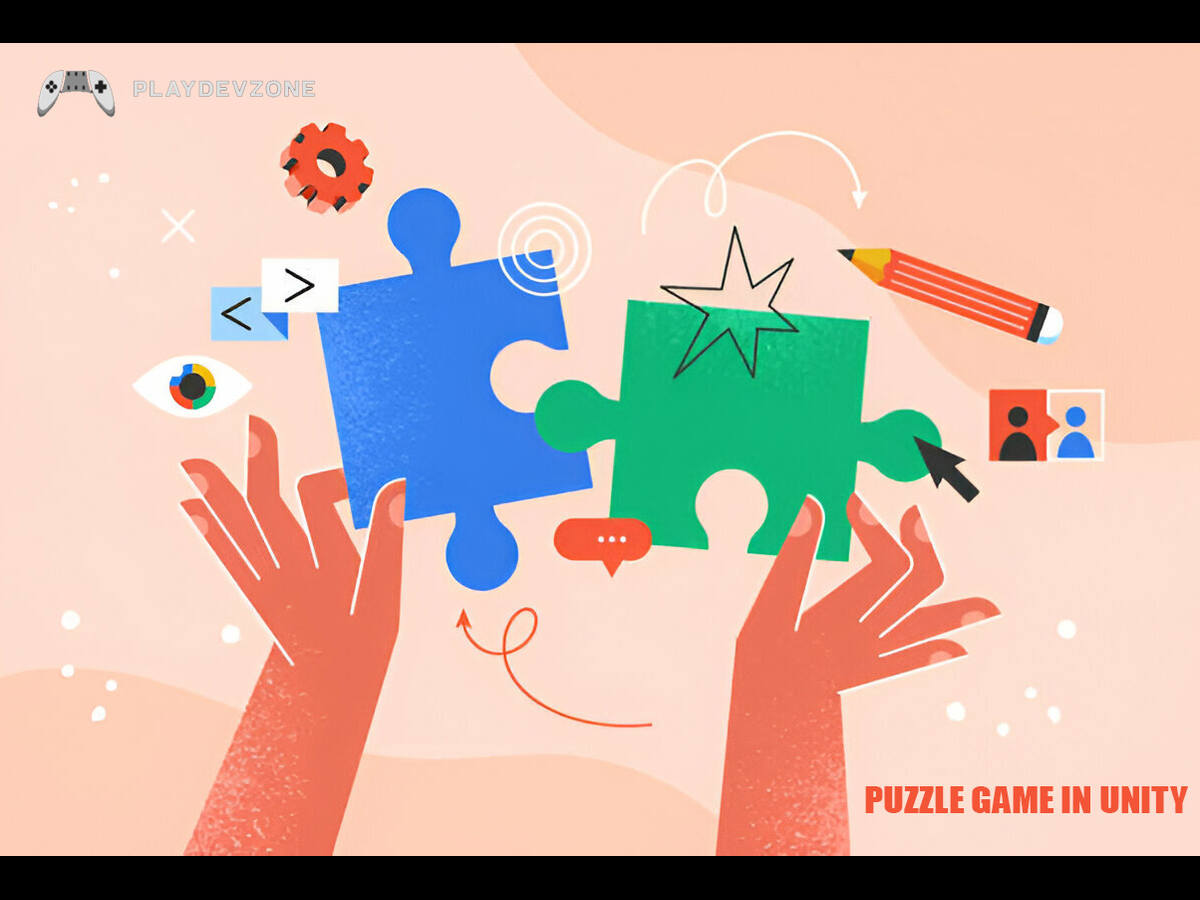
More importantly, we'll take you behind the scenes to show you how to create a drag-and-drop puzzle game in Unity, one of the most powerful and user-friendly game development engines available today.
Whether you're an aspiring game developer, a beginner with Unity, or a puzzle game enthusiast looking to turn your idea into a real game, this guide will provide everything you need to get started, step by step, with no prior coding experience required.
Psychology Behind Puzzle Games
Puzzle games are more than just fun; they tap into key areas of human psychology.
These games stimulate cognitive functions such as memory, problem-solving, and spatial awareness, making them both entertaining and mentally engaging.
Players are driven by the satisfaction of solving challenges, which triggers the release of dopamine in the brain, encouraging continued play (Best Online Puzzle Games).
This blend of achievement, focus, and curiosity makes puzzle games highly addictive and beneficial for mental health.
Whether it's a jigsaw puzzle, a logic-based riddle, or a drag-and-drop game, the psychological appeal lies in how puzzles engage the brain in a low-stress, yet rewarding environment.
It's no wonder they remain a top choice for gamers of all ages.
Types of Puzzle Games (Match 3, Logic, Spatial)
Puzzle games come in many forms, each offering a unique way to challenge your brain.
Match-3 games, such as Candy Crush, involve aligning similar items to score points, combining strategy with visual speed.
Logic puzzles, such as Sudoku or brain teasers, test your reasoning and critical thinking skills (Best Online Puzzle Games).
Then there are spatial puzzles, which focus on shapes, positioning, and movement, like jigsaw puzzles or Tetris-style games.
These types not only entertain but also enhance memory, problem-solving, and spatial awareness.
Whether you enjoy casual gameplay or complex challenges, there's a puzzle genre for everyone.
Designing a Level with Increasing Difficulty
Creating a puzzle game that keeps players engaged requires smart level design, especially when it comes to progressive difficulty.
Introducing easy challenges at the beginning allows players to grasp the basic gameplay mechanics smoothly and without feeling overwhelmed (Best Online Puzzle Games).
As levels advance, gradually introduce new obstacles, tighter time limits, or more complex patterns to keep things interesting.
This difficulty curve keeps players motivated while avoiding sudden spikes that can lead to quitting.
Balance is key: each level should feel like a rewarding step forward.
By combining intuitive tutorials, visual cues, and steadily increasing complexity, you'll create a puzzle experience that's both fun and addictively challenging (Best Online Puzzle Games).
This approach not only boosts user retention but also encourages longer play sessions, which are perfect for both engagement and monetization.
Building a Drag-and-Drop System In Unity
Puzzle games have been a staple in gaming for decades, offering players a blend of challenge and satisfaction.
Whether you’re a developer looking for inspiration or a gamer who loves brain teasers, this article explores the seven best online puzzle games and walks you through the basics of creating a drag-and-drop puzzle game using Unity.
7 Best Online Puzzle Games (You Should Play Right Now)
Here’s a curated list of popular and innovative online puzzle games that stand out for their gameplay, design, and engagement.
1. The Witness
A beautifully designed first-person puzzle game set on a mysterious island. Every puzzle is based on observation, pattern recognition, and logic.
Why it's excellent: Non-linear progression and immersive visuals.
2. Portal 2 (Puzzle Creator Mode)
Valve’s Portal 2 offers not just brilliant gameplay but also a user-created puzzle mode where players can design and share levels.
Why it's excellent: Combines physics puzzles with humor and creativity.
3. Sudoku.com
A classic logic puzzle available online with a clean interface and daily challenges.
Why it's excellent: Timeless gameplay, endless replayability.
4. Human Resource Machine
In this coding-based puzzle game, players automate office tasks with logic and problem-solving.
Why it's excellent: Teaches programming basics through gameplay.
5. Cut the Rope
A physics-based game where you solve puzzles by strategically cutting ropes to feed candy to a little monster.
Why it's excellent: Simple mechanics, addictive gameplay.
6. Cogs
A steampunk-inspired puzzle game where players manipulate gears, pipes, and more to solve 3D puzzles.
Why it's excellent: Highly original with a tactile, mechanical feel.
7. Baba Is You
A mind-bending puzzle game where you manipulate rules as physical objects to solve puzzles.
Building a Drag-and-Drop System In Unity
Creating a smooth and responsive drag-and-drop system is essential for many puzzle and UI-based games in Unity.
This interactive feature allows players to click, drag, and place game objects intuitively, making gameplay more engaging and hands-on.
Using Unity's built-in tools, such as colliders, raycasting, and event systems, developers can create flexible drag-and-drop mechanics with minimal code (Best Online Puzzle Games).
Whether you're designing a jigsaw puzzle, an inventory system, or an educational game, the key is accuracy and user-friendly feedback, like snapping effects or visual cues.
A well-built drag-and-drop system not only enhances the user experience but also keeps players engaged, increasing both session time and retention.
Timer, Hints, and Score System
Adding a timer, hint system, and scoring mechanism can significantly enhance the player experience in puzzle games.
A timer introduces urgency, pushing players to think quickly and stay engaged.
Hints provide a helpful guide when players get stuck, reducing frustration and encouraging longer play sessions (Best Online Puzzle Games).
The score system adds a layer of achievement and replayability, rewarding players based on speed, accuracy, or efficiency.
Together, these features create a more dynamic and interactive gameplay loop.
When well-balanced, they not only improve user satisfaction but also increase retention and in-game monetization, making them ideal for both casual and competitive puzzle games on mobile or web platforms.
UX/UI in Puzzle Games
In puzzle games, UX (User Experience) and UI (User Interface) design play a crucial role in keeping players engaged.
A clean, intuitive interface helps users focus on solving puzzles without distractions or confusion.
Clear visuals, responsive controls, and strategically placed buttons enhance usability, particularly on mobile devices.
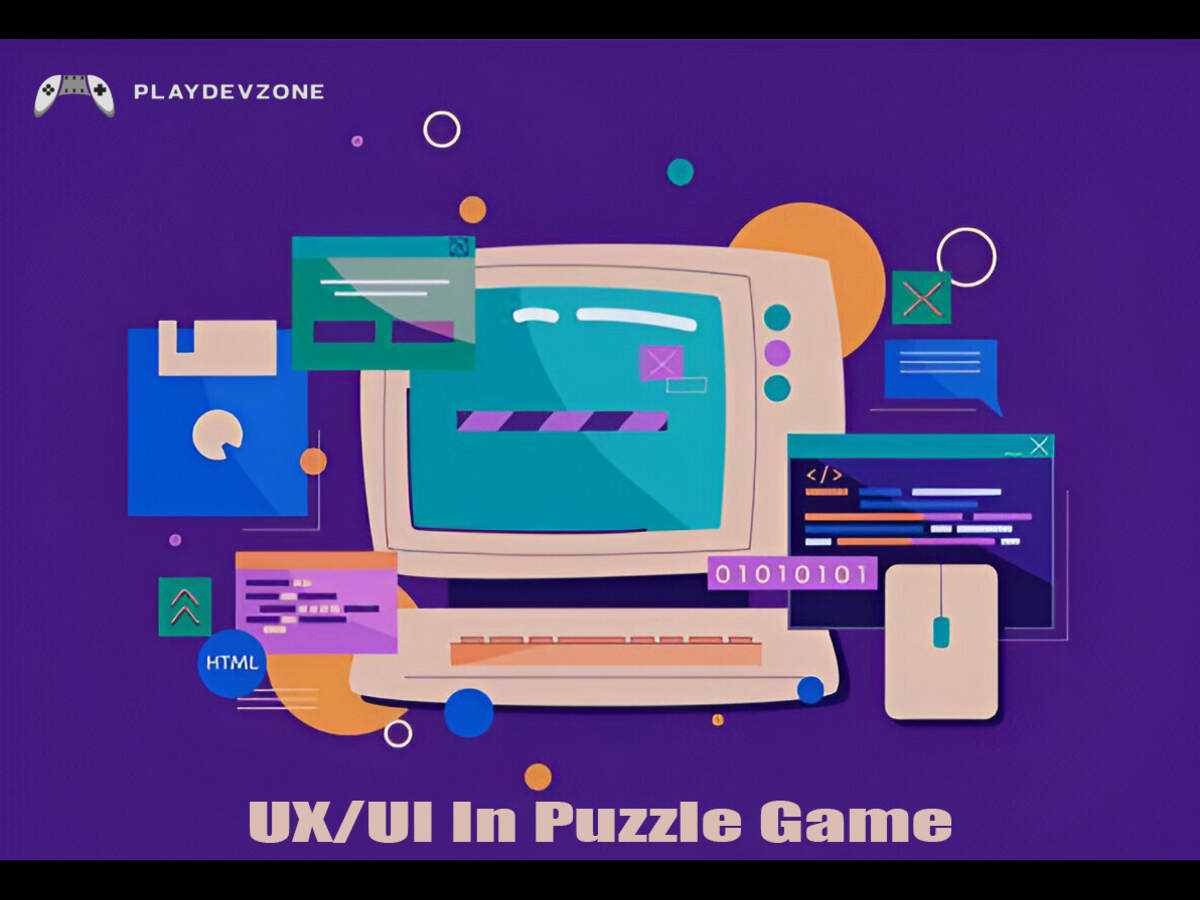
Good UX design ensures smooth navigation, hint access, and feedback mechanisms that guide the player naturally.
Whether it's drag-and-drop mechanics, timers, or score displays, every element should be easy to understand at a glance.
Prioritizing user-friendly design not only enhances gameplay but also boosts retention, making your puzzle game more enjoyable and successful in a competitive market.
Publishing on Mobile
Once your puzzle game is complete, the next big step is publishing it on mobile platforms like Google Play and the Apple App Store.
Mobile publishing gives your game access to millions of users worldwide, boosting visibility and monetization potential (Best Online Puzzle Games).
Start by optimizing your app for performance, screen sizes, and touch controls.
Then, prepare essential assets like icons, screenshots, and a compelling game description using strong keywords for App Store Optimization (ASO).
Ensuring your game runs smoothly requires thorough testing on a variety of devices and screen sizes.
Finally, submit your game, set pricing or ads, and monitor performance with analytics.
Publishing on mobile isn’t just about launching it’s about growing your game’s success.
Final Thoughts
Creating a puzzle game from concept to launch can be both exciting and rewarding.
By understanding game mechanics, designing engaging levels, and implementing features such as drag-and-drop, timers, and hint systems, you build more than just a game; you craft a fun and interactive experience (Best Online Puzzle Games).
Don't forget the importance of UX/UI and thorough testing to ensure your game works flawlessly across devices.
Once ready, publishing on mobile opens the door to a global audience.
Whether you're a beginner or an indie developer, every step you take brings your vision closer to reality (Best Online Puzzle Games).
Keep learning, stay creative, and enjoy the process of bringing your puzzle game to life!
FAQ (Frequently Asked Questions)
what is the best online puzzle game?
One of the best online puzzle games is "Brain Out", known for its tricky questions and mind-bending challenges.
It combines fun and logic, making players think outside the box. Whether you're solving math puzzles, visual riddles, or logic problems, Brain Out keeps your brain active and entertained (Best Online Puzzle Games).
Available on both desktop and mobile, it's an excellent choice for users of all ages. Its colourful design and surprising solutions make it stand out among puzzle games (Best Online Puzzle Games).
If you're looking to sharpen your thinking skills while having fun, Brain Out is a top pick. Try it for free and enjoy hours of brain-teasing entertainment!
Are online puzzles good for your brain?
Online puzzles offer excellent benefits for your brain. They stimulate critical thinking, enhance concentration, and strengthen memory by engaging the mind through fun and interactive challenges.
Regularly playing puzzle games can also support cognitive development, relieve stress, and slow down age-related mental decline.
Whether it's logic puzzles, word games, or brain teasers, these activities keep your mind sharp and focused while providing enjoyable entertainment (Best Online Puzzle Games).
Whether it's crosswords, Sudoku, or logic games, these activities keep your brain active and engaged.
Many online puzzle games are designed to enhance critical thinking and concentration.
They're also easily accessible, making it simple to train your brain anytime, anywhere.
If you're looking for a fun way to stay mentally sharp, online puzzles are an innovative and enjoyable choice.
What is the hardest online puzzle game?
One of the most challenging online puzzle games is "The Witness." This challenging game features hundreds of mind-bending puzzles set on a mysterious island.
Each puzzle requires deep thinking, pattern recognition, and attention to detail. With no hints or instructions, players must rely on observation and logic to progress (Best Online Puzzle Games).
"The Witness" is not just a game; it's an actual mental workout. Its beautiful design and immersive gameplay make it a top choice for serious puzzle lovers.
If you're looking for a brain-teasing experience that pushes your problem-solving skills to the limit, "The Witness" is considered one of the most rewarding and challenging puzzle games online today.
What is the world’s bestselling puzzle game?
The world's bestselling puzzle game is Tetris, a timeless classic created by Alexey Pajitnov in 1984.
With over 500 million copies sold across various platforms, including mobile devices, consoles, and PCs, Tetris has captivated generations with its simple yet addictive gameplay.
Players must strategically rotate and place falling blocks to complete horizontal lines, which then disappear to make space for more (Best Online Puzzle Games).
What makes Tetris uniquely enduring is its universal appeal, easy to learn, challenging to master, and endlessly replayable. Its influence extends beyond gaming, shaping pop culture and even being used in cognitive research.
Decades after its release, Tetris remains not just a bestseller but a symbol of perfect game design and enduring challenge.
What is the most downloaded puzzle game?
Candy Crush Saga, created by developer King and released in 2012, holds the title of the world's most downloaded puzzle game.
With its vibrant visuals and addictive match-three gameplay, the game has attracted billions of players globally (Best Online Puzzle Games).
Over the years, it has accumulated more than 3 billion downloads across various platforms, setting a benchmark in mobile gaming (Best Online Puzzle Games).
Its widespread appeal and frequent content updates have kept it at the top of puzzle game charts for over a decade.
Its massive success stems from its colorful design, progressively challenging levels, and clever use of reward mechanics.
With match-three gameplay that's easy to understand but increasingly difficult to master, Candy Crush Saga appeals to a broad audience, from casual players to puzzle enthusiasts.
The enduring popularity of the game can be credited to its highly engaging mechanics, consistent content updates, and seamless social connectivity.
These elements keep players coming back, fostering long-term engagement and competition among friends.
Even after more than a decade, its dynamic design and community features continue to capture and retain a massive global audience (Best Online Puzzle Games).
Its ability to evolve while keeping core mechanics consistent makes it not just the most downloaded puzzle game, but also one of the most influential mobile games of all time.
Conclusion
Puzzle games remain a favorite among players for their brain-boosting challenges and simple, yet addictive, gameplay.
With tools like Unity, creating your own drag-and-drop puzzle game is now more accessible than ever (Best Online Puzzle Games).
From designing smooth mechanics to adding innovative features like timers, hints, and scoring systems, each step brings your game closer to a polished, playable experience.
Whether you're building for fun or aiming for the app stores, the skills you gain through this process are valuable for any game developer (Best Online Puzzle Games).
So take your creativity, apply what you've learned, and start building a puzzle game the world will love to solve!

